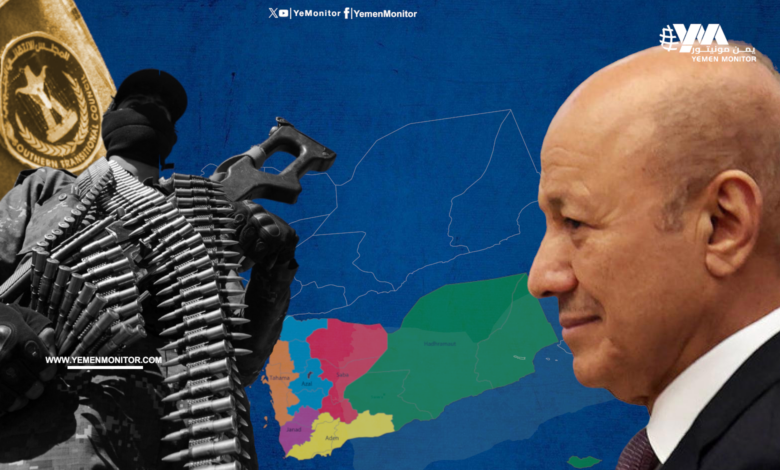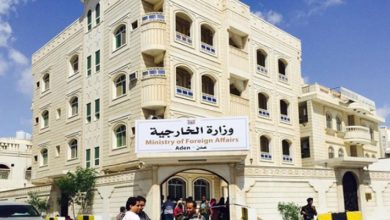
Yemen Monitor/Reporting Unit/By Salah Al-Wasei
Yemenis reside in scattered and isolated regions due to the country’s geographic nature, fostering secessionist tendencies. Historically, Yemen has been composed of numerous independent principalities, uniting only for brief periods.
The Yemeni Republic project, jeopardized by the state’s collapse in 2015 and the ensuing decade-long war, has led to the emergence of independent Yemeni entities. New identities based on historical concepts such as tribe, sect, and denomination have surfaced on the Yemeni scene, fueling the idea of secession and increasing the likelihood of its occurrence.
Over the past nine years, political entities with aspirations for independence have formed, most notably the Iranian-backed Supreme Political Council in Sana’a, the Southern Transitional Council(STC) in Aden, the UAE-backed Political Council of the National Resistance in Mokha and the western coast, and the Hadramaut Council.
Independent Cantons
Abdulsalam Mohammed, head of the Ab’ad (Dimensions) Center for Studies, told Yemen Monitor: “If the weakness of the Yemeni state continues, these armed groups in Yemen will eventually resort to self-determination options.”
Mohammed affirms that a peace agreement in Yemen, if reached, will leave the externally supported armed groups in the areas they control, and there is a possibility that the Houthis will expand further.
Mohammed believes that a federal system is suitable for Yemen, but in his opinion, it requires a strong central state, otherwise, the regions will be more like independent states. He pointed out, saying: “What is more dangerous is that armed groups will take control, and we will witness truly independent states. If the war continues, we will witness gangs ruling.”
The Impossible Peace
Political analyst Mona Safwan expects a stalemate in Yemen’s peace agreement in the coming years. She says, “There will be no peace agreement, and I believe the roadmap will be obstructed because there is a regional agenda that wants to divide Yemen according to a regional map.”
She pointed out that war in Gaza has reduced the chances of the Yemeni parties meeting at the same table. The reason, in her opinion, is that the war in Yemen is linked to the Gaza war and is contingent on Israeli intransigence. She believes that one party believes that the Gaza war can only be resolved through weapons and further escalation, while other parties believe in normalization.
Safwan added to Yemen Monitor that Yemen will experience a long period of stagnation, which may turn into more conflict, especially since the discourse of war is still prevalent in the country, whether among parties affiliated with Saudi Arabia, the UAE, or Iran.
The Loss of the Greater Unified Yemen
All military forces in Yemen have established their own small states, and there is no doubt that any future political settlement, even if it is distant in the next two years, will take this framework of military formations that have established their own states as a fait accompli. In short, the greater unified Yemen is no longer on the table for the next ten years, according to political analyst Abdul Sattar Al-Shamiri’s view of the current situation in Yemen.
Faisal Al-Hudhifi, a professor of political science at the University of Hodeidah, believes that practicing independent self-governance through external funding for some military groups and components in Yemen can achieve partial successes. However, this remains subject to external interventions that fuel this fragmentation tendency to facilitate their intervention and serve their agendas. Once the effect of external intervention ends, the entities and options for secession or self-governance will collapse.
Al-Hudhifi pointed out to Yemen Monitor that the current arrangements in Yemeni cities are not an expression of regional administration in self-governance or independence from the central authority, but rather an expression of the arrangements and intentions of regional and international interveners, on the one hand, and filling the vacuum locally and regionally due to the weakness of the central authority on the other hand.
He added, “The tendency towards full self-governance will not be possible, at a minimum, except in governorates capable of operating themselves with surplus domestic resources: oil, gas, ports, fisheries, and agriculture. These are not available or complete for success. For example, Marib has surplus resources but no port, airport, or international border crossing, and Taiz has no resources and is the easiest to besiege by any party.”
Taiz in the Division Plan
Observers believe that there is no absolute control by any single party in the city of Taiz. Political parties there share in local authority. “While the public space is closed and forced in a unilateral direction for the benefit of the militias and dominant components in other governorates, Taiz appears to be an open place for various forms of political and partisan activity, and is relatively similar only to the governorate of Marib.”
Political writer Abdul Aziz Al-Majidi told Yemen Monitor: “The Arab coalition is keen to tear the city of Taiz into three Taizes: there is Taiz under Houthi control in the industrial Hoban area, and coastal Taiz as the most important part as a port, including Thubab district overlooking the strategic Bab el-Mandab Strait. These two parts can be described as the useful part of Taiz. The third part is the one that is densely populated and under the control of the national army, which is subordinate to the Ministry of Defense and whose majority is a popular resistance mobilized by the Islah Party.”
Al-Majidi pointed out that this situation in Taiz may seem like a good example of what the coalition wants in the country as a whole, a formula that will be repeated with other actors in the southern governorates, where the two coalition countries compete, although the UAE has the greatest influence with recent Saudi attempts to build loyal military formations such as the Salafist National Shield Forces.
In response to a question about who will rule Taiz in the future, Al-Majidi said: “I remember a Saudi officer who speaks frequently in the media saying explicitly that the national army will be disbanded and that a Zaidi force – he said it literally – will take over the completion of the liberation of Taiz and the rest of the areas. Of course, this statement was after the August coup in Aden against President Hadi.”
He pointed out that Riyadh has become more interested in reaching a deal with the Houthis, while Abu Dhabi seeks to empower its arms and is undoubtedly seeking through Tareq to be the dominant force in Taiz, and it is using various means for this purpose, so far still soft, such as building service projects such as the road linking Al-Mukha to the city via Al-Kadha, and Al-Mukha airport, and then through the generous funds it provides to cover Tareq’s activities.
Opinions differ about Taiz, as the political sociologist Rasha Abdulkafi asserts that the Islah Party will not give up the city of Taiz, as the Islah has lost control of the northern regions of Yemen, which are monopolized by the Houthis, and lost its position in the south, which is controlled by the STC, and no longer has a presence except in the cities of Marib and Taiz, which means that it is looking for a foothold in the new map of the political settlement.
Safwan denies that there is a political partnership in the city of Taiz, saying that there is no single study that proves this so far, and that Taiz is no different in its situation from the rest of the Yemeni governorates.




